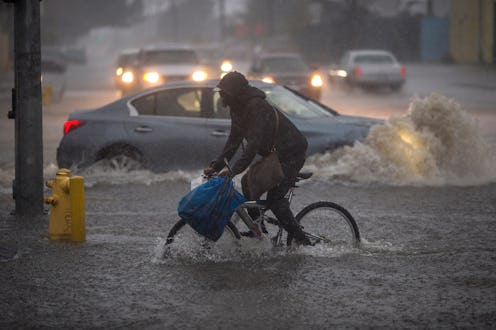News
Scientists Predict Climate Change Could Plunge These U.S. Cities Underwater

If you live on the coast, sinking land and rising seas might mean that your home won't be there at the end of the century — or even sooner, according to experts. The Union of Concerned Scientists have predicted that rising sea levels caused by global warming could flood U.S. cities — hundreds of them, actually. New York, San Francisco, Miami and Boston are among other cities large and small as places at risk of majorly flooding in the next 20 to 80 years. The study predicted that 10 percent or more of usable land in coastal communities could be hit with chronic or permanent tidal flooding, rendering the community "inundated."
The parameters for what counts as permanently or chronically "inundated" are fairly conservative, so don't expect an ocean apocalypse to wipe out Miami this time next year. Miami and places like the south of Louisiana already experience flooding every year, and both the state and federal government have spent more than $1 billion on flood alleviation. And this doesn't begin to factor in the cost residents spend on repairing damages and being forced to move. On top of costliness and physical destruction, climate change can also exacerbate social inequalities.
Human-caused sea level rising is the catalyst of most coastal flooding, Benjamin Strauss, vice president for Sea Level and Climate Impacts at Climate Central, suggested to CNN.
Analysts published a comprehensive study which lists the cities affected by flooding, citing 90 communities already inundated, mostly in Louisiana and Maryland. By 2060, that number grows to hundreds of communities along the east and south coast, from the Jersey Shore to Texas. By 2100, more than 13 million people are in danger of displacement caused by climate change, especially in low-lying areas in Florida. The Union of Concerned Scientists also created an interactive map for users to explore how rising sea levels could affect your home.
These studies further support the wide range of devastation that climate change has already or can potentially cause, from famine to a breakdown of ecosystems. The physical, social, and economic impact of global warming on stretches beyond U.S. borders, though. Earlier this week writer David Wallace-Wells speculated, "when will the earth get too hot for humans?" Scientists know that rapid global warming is already destabilizing unique natural environments — if we don't reduce our greenhouse gases, a quarter of Antarctica's icy areas could melt by 2100. That ice has to go somewhere, and it makes a significant contribution to sea level rise.
Beyond floods, climate change also plays a major role in other global natural disasters, such as desertification, droughts, and storms. These problems have already triggered mass displacement and an internal refugee crises.
That's why some of us might be alarmed that despite strong evidence pointing to the severe consequences of human-driven greenhouse gas emissions, the Trump administration is still skeptical of climate change and trying to undo climate policies set by Obama.
Trump, for instance, has already withdrawn the United States from the global Paris Agreement, a decision that caused contention within his own party and staff. And earlier in his term, he allegedly attempted to remove the climate change page from the Environmental Protection Agency's website. Moreover, his 2018 budget proposal, titled "A New Foundation for American Greatness," slashes the EPA's budget by 31 percent. The president has tweeted himself that "the concept of global warming was created by and for the Chinese in order to make U.S. manufacturing non-competitive."
The potentially catastrophic effects that could befall dozens of U.S. cities say otherwise.